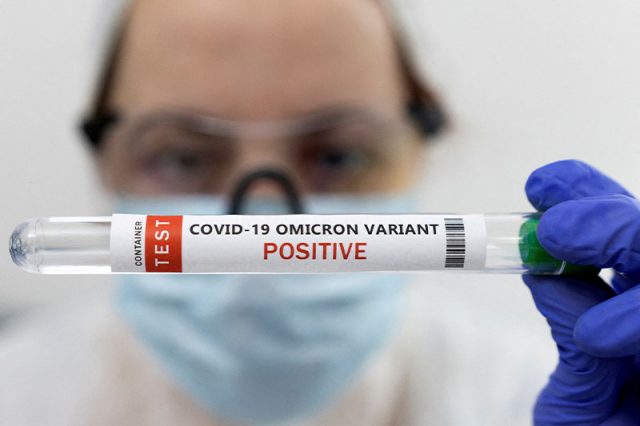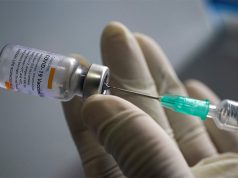
An infectious disease specialist was perceived to downplay the highly infectious Omicron subvariant BA.5 on a Facebook post.
Physician Edsel Salvana, adviser to the pandemic task force, on Wednesday wrote that the particular subvariant “is not the worst” of all, adding that the Delta variant currently holds the “distinction.”
“BA.5, being an Omicron sublineage is likely less virulent than Delta at baseline. And with widespread vaccination which still protects against severe disease, we do not expect severe and critical cases to be anywhere near Delta levels and these will not overwhelm our healthcare system,” he wrote.
“It does seem to be more immune evasive than other variants so we expect a lot of cases, but only a few of these will be severe or critical. Masks and antivirals still work. Vaccines continue to protect against severe disease and work better with a booster,” Salvana added.
He further said that people should be careful of “hyperbolic descriptors” who share things without context and cause panic and alarm.
“Stick to reliable sources of information: DOH, CDC and WHO and those with relevant expertise. Stay safe,” the physician continued, referring to the Department of Health (DOH), United States’ Center for Disease Control and Prevention (CDC) and the World Health Organization.
The physician’s post concerned some Filipinos who thought he is downplaying the subvariant’s impact.
“Ang hina ni Edsel mag integ ng concepts lol. BA.5 is only beginning to take foothold in US infections and they’re already seeing increased admissions there. Couple that with the fact that BA.5 can evade immunity MAKES IT A THREAT LIKE DELTA (WHEN WE HAD LOW VACCINATION RATES),” a Twitter user said.
“When the guy who got it all wrong with transmission now makes a declaration close to saying that BA.5 ain’t that bad….” user @white_bite, an oral pathologist, said.
Last week, ABS-CBN data analyst Edson Guido observed that the BA.5 subvariant appeared to be “emerging as the dominant subvariant” based on the genome sequencing from June 29 to July 4.
At that time, the DOH announced that it has detected 140 additional BA.5 cases, 20 more BA.2.12.1 cases and seven additional BA.4 cases.
Last June 28, the BA.5 subvariant also logged the highest number of new cases in the genome sequencing. The health department said it had detected 50 additional BA.5 cases, 11 additional BA.2.12.1 cases and two more BA.4 cases.
The DOH also logged an additional 32 cases of the BA.5 subvariant on June 22. No other additional BA.2.12.1 cases were detected at that time.
This was also observed by an oral pathologist on Wednesday.
Well, whaddya know? BA 5.5! Mostly BA.5 in the air these days. Yup! We're out of the pandemic. Pft. Check out this link from @Mike_Honey_ for update on variants and vax status in the country. https://t.co/ISuk1pPRlh @peachybrets @mdsynic @paulakatarina @mrsunlawyer pic.twitter.com/6an6HR6EK7
— Jette's Back to Mysterious (@white_bite) July 13, 2022
A look at how BA.5 is behaving
The Omicron BA.5 subvariant was first documented in South Africa last January.
In the United States, the UC Davis Health said that based on US CDC, the subvariant has accounted for more than half of America’s new cases as of July 2.
BA.5, along with BA.4, are reported to be “the most capable versions of the virus yet at evading immunity from previous infections and vaccines,” according to the New York Times.
The report said that these subvariants have mutations in their spike proteins different than the earlier versions of the virus.
It added that “in places where BA.4 and BA.5 have been dominant for weeks or months, the subvariants have caused increases in cases and hospitalizations, despite some population immunity from previous waves.”
“The C.D.C. says there is so far no evidence that BA.4 or BA.5 is inherently more severe than other Omicron subvariants, but when more people become infected, the number of people hospitalized because of the virus may also rise,” the report said.
As an example, it cited the case of Portugal in which hospitalization rates neared their previous Omicron peak after BA.5 became dominant last May.
Physician Anthony Fauci, chief medical advisor to the White House and director of the US National Institute of Allergy and Infectious Diseases, said that the subvariant is not linked with more severe illness.
However, since the overall number of cases is growing with BA.5, more people are in the hospital overall, he explained.
US CDC Director Rochelle Walensky also acknowledged that there has also been a “doubling of hospital admissions since early May.”
According to molecular medicine professor Eric Topol, who analyzed a preliminary report from the Kirby Institute, the BA.5’s ability to infect cells might be more similar to the Delta variant than other versions of Omicron.
The preliminary report, however, has not yet been peer-reviewed.
For physician Tony Leachon, a health reform advocate and former special adviser to the National Task Force (NTF) Against COVID-19, people needed to “boost up” since BA.5 is “the most evasive” to immunity and is “highly transmissible” than other variants.
“We’re still under control but we need to raise the red flag or sound the alarm bells para ang ating mga kababayan ay makapag-ingat,” he said in an interview.
RELATED: Physician underscores ‘booster’ key to weather COVID storm









